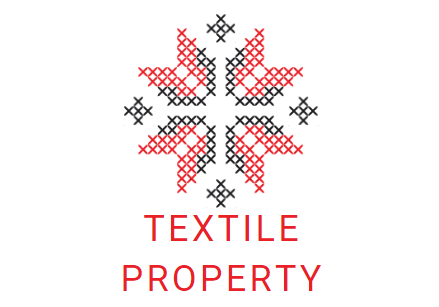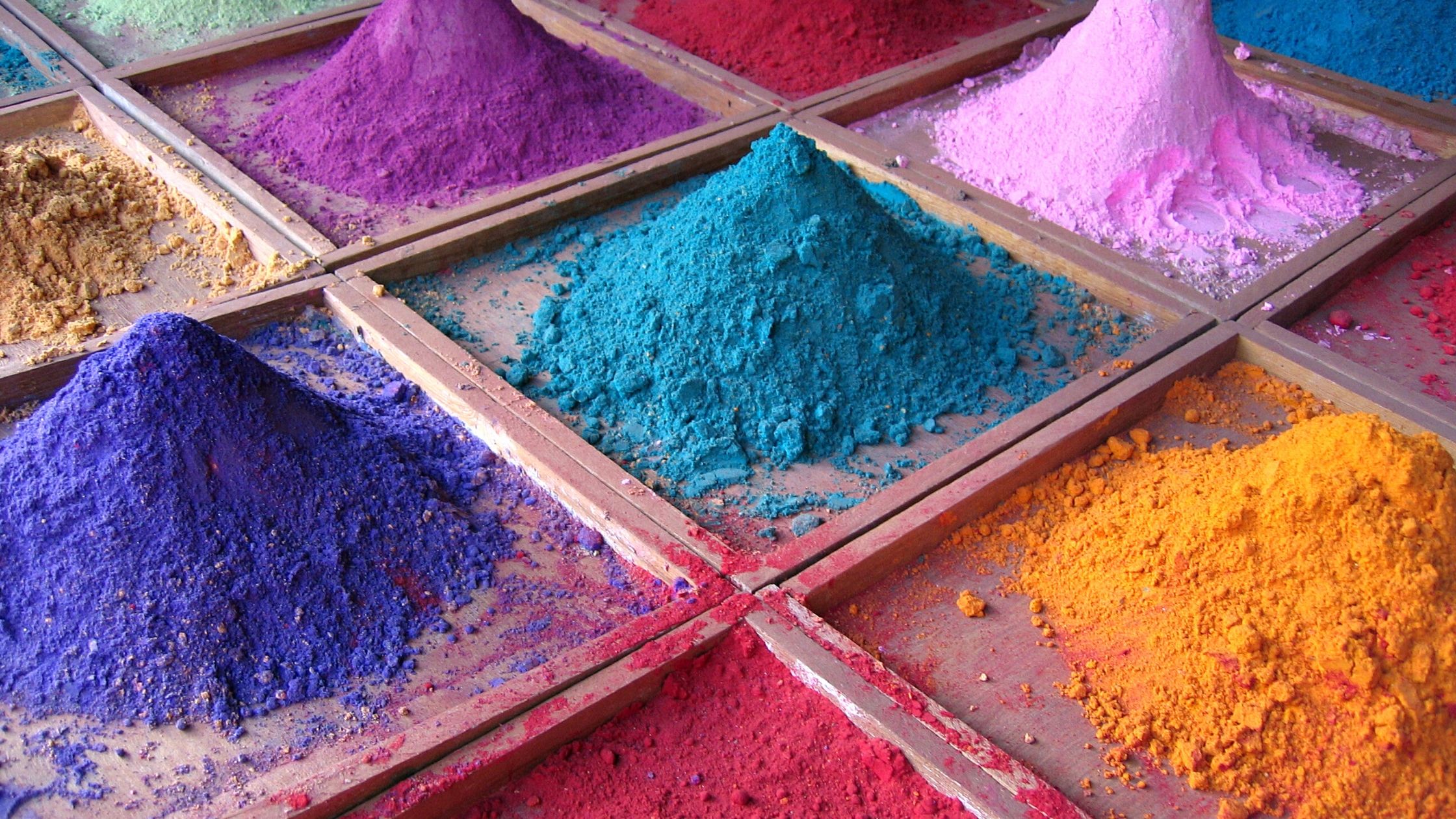Pigment dyeing has gained that much popularity even though it is a comparatively recent addition. Actually, no chemical reactions take place between the dye and fiber.
Only the pigment molecules get seated on the top of the fabric surface along with a binder. Pigments are insoluble in water and have no affinity for fibers.
So, pigment dyeing is somewhat different from other conventional dyestuff-based dyeing.
To overcome this problem, a new kind of pigments have been formulated which are maintained in a stable dispersion in the medium of water by anionic surfactants.
These are known as Pigment Resin Color (PRC), primarily used in printing.
Some of the popular pigments are given below:
- Yellow color: Acetoacetic acid anilide pigments
- Red: Azoic pigments
- Blue or green: Phthalocyanine pigments
Dyeing is process where dyes are taken to a solubilized condition and applied from an aqueous medium.
Pigment dyeing is not actually dyeing in the truest form. As, pigment molecules are just seat onto the top of the fabric in accordance with binders.
With the addition of anionic dispersing agents that imparts a slightly negative charge, thus the foundation for pigment dyeing is created.
Here a magnetic bond is produced with the addition of a positively charged cationic pre-treatment to the fiber. With the addition of a cationic binder the process completes. The binder is added to “lock” the pigment in place.
Properties of Pigment
- Insoluble in water
- Organic or inorganic compounds
- No auxo-chrome group in their structure
- No affinity for fiber
- Binder is required for fixation
- Applicable to all kinds of materials
- No after-treatment required
- Rubbing fastness is poor
- Water and light fastness is good
- Physical properties: Particle size: 0.2-0.4 µ
Sp. Gravity: 1.14 – 1.37
Boiling points: Decompose at 190℃
- Most of them are azoic compounds along with some inorganic oxide, inorganic salt, phthalocyanine metal compounds etc.
Required properties of Pigments
- Should have good coverage
- Should be chemically inert
- Should have freely mixing quality
- Should have good resistance to acid, alkali, bleaching agent etc
- Should have good fastness properties
- Should be applicable to all kinds of textile materials
Key features of a good pigment dyeing
- Doing without wet processing: Results in less water pollution to-gather with high productivity.
- Binder: For improving rubbing fastness
- No thermo-migration: Ensures even dyeing on both side
- Excellent fastness properties
Mechanism of dyeing with pigment
The pigment dyeing process is generally contains three step:
- Cationic pre-treatment of fabric
Dyeing with pigment is nothing but an electrical process. In this process, an opposite electrical charge of the pigment is given to the fabric that we want to dye. As like magnet, the opposite charges begin to attract each other when the addition of pigment to the bath takes place.

Fig: Diagram of process by which cationic polymer form a layer of cationic charge when applied to the fiber surface


Fig: Diagram of process by which reactant modify the fiber by formation of covalent bond
Along with wetting agent and acetic acid (to control the pH), cationic agent is applied to the fabric to be dyed. After a couple of time, the fabric is rinsed.
Chemicals required (recipe) for cationization:
- Cationic agent
- Wetting agent
- Acetic acid (to control pH)
In fact, this stage enables the fabric more readily accept the pigment molecules. Pigment molecules do not penetrate the fiber like the other type of dyes rather just sit onto the top of the surface.
- Pigment exhaustion onto the fabric
An anionic charge has to be imparted to the pigment. First of all, the pigments are mixed with water and dispersing agent to impart anionic charge to the pigment.
Once the solution is ready, it is added slowly to the dyeing machine. Then the temperature of the bath is slowly increased and held up to 20 minute at dyeing temperature. The fabric is then held at the elevated dyeing temperature so that it can facilitate the adsorption of the pigments onto the fabric surface.
Chemicals required for exhaustion:
- Pigment
- Dispersing agent
- Binder application
Pigment has no auxo-chrome thus having no affinity for fabric. As they can’t form any bond, only sit on the top of the surface, a binder is a must in exhaust pigment dyeing for fixing pigment color.
Binders are none other than acrylic polymers with nonionic and cationic nature. It improves rubbing and washing fatness. Once the pigment exhaustion completes, binder is added and exhausted onto the fabric over a certain period of time.
To facilitate binder polymerization, Acetic acid is added to the dye bath. Then finally, the fabric is rinsed. After that, the dyeing machine is drained and fabric is extracted.

Types of Binder
1. According to origin:
I.Natural: Glue, Gelatine etc
II.Synthetic: Acramin binder
2. According to chemical group:
I.IG binder: Emulsion copolymer of vinyl acetate and butyl acrylate with modified urea formaldehyde.
II.AG binder: Emulsion copolymer of olifinic unsaturated monomers in aqueous medium. Monomers include:
Acrylic acid ester
Styrene
Acrylonitrile
Vinyl chloride
Pigment Dyeing Flowchart
Garments dyeing with pigments (Exhaustion method)
Role cutting into panel
Normal wash to control shrinkage
Panel cutting for garment stitching with numbering and bundling
Garments stitching
Garment ready for pigment dyeing
Garment loading
Cationic pre-treatment
Rinsing
Pigment exhaustion
Binder application
Extraction
Tumble drying
Advantages of pigment dyeing
- Wide amount of shades are available. For asthetic purpose and fashionable items, some brilliant fluorescent pigments are available.
- Suitable for all textile materials and their blends.
- Pigment dyeing process is quite cheap.
- Chemicals required for dyeing are less toxic.
- Eco friendly process that ensures least pollution
- Color fades with repeated use that brings a new trend in fashion like denims.
Drawbacks of pigment dyeing
- If color fading is not desired for the particular fabric then it could be a problem. Further chemical treatment is the only way to keep the color intact.
- Depending upon the pigment, binder or softener used, the abrasion resistance and hand feel could not be up to the mark.
Wrap It Up!
Pigments may not produce better results with dark and deep shades. But overall, it presents a better result in printing.
Salma Hasin the author of this site completed her BSc. in Textile Engineering (Wet Processing Engineering). She wants to share her knowledge to help students in their studies and businessman & entrepreneurs in their businesses in making wise decisions fast.


Very nicely described.